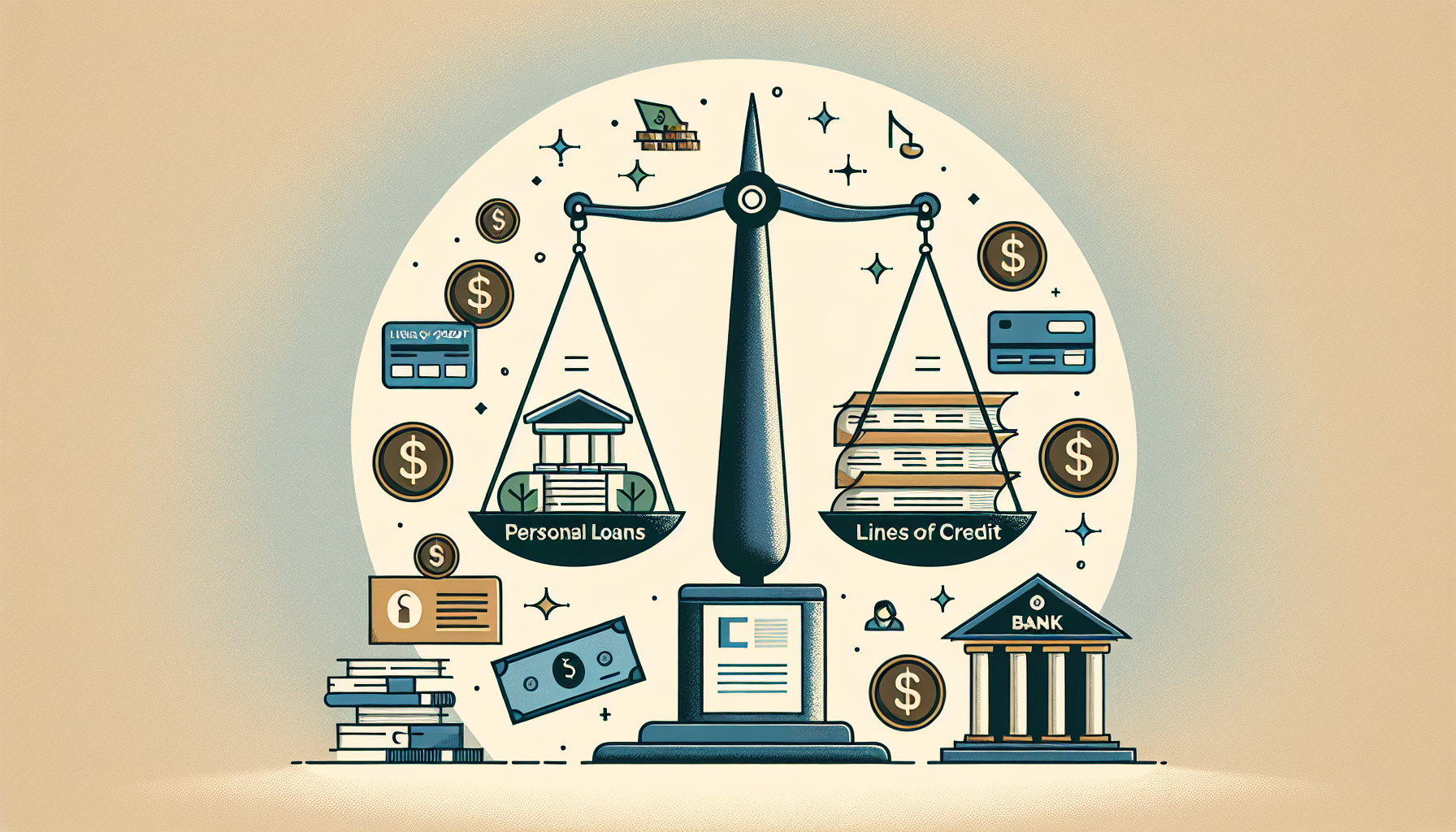When it comes to borrowing money, personal loans and lines of credit are two popular options that individuals often consider. While both can provide access to funds when needed, there are distinct differences between the two. Understanding the nuances of personal loans versus lines of credit can help you make an informed decision about which option is best suited to your financial needs.
Personal Loans vs. Lines of Credit: A Comparison
Personal loans are lump-sum loans that are typically repaid in fixed monthly installments over a predetermined period of time. The borrower receives the full amount of the loan upfront and pays interest on the entire loan amount. On the other hand, lines of credit are revolving credit accounts that allow borrowers to access a predetermined credit limit as needed. Borrowers can choose to use the entire credit limit or only a portion of it, and interest is only charged on the amount borrowed. This key difference in repayment structure can impact the overall cost and flexibility of each option.
In terms of flexibility, lines of credit offer more versatility compared to personal loans. With a line of credit, borrowers have the flexibility to borrow as much or as little as they need, up to their credit limit, and can repay and borrow again as needed. This can be particularly beneficial for individuals who have fluctuating financial needs or expenses. Personal loans, on the other hand, provide a fixed amount of funds upfront, which may not be as adaptable for unforeseen expenses or changing financial situations.
Key Differences and Similarities Explained
One of the key differences between personal loans and lines of credit is the way in which interest is calculated. Personal loans typically have a fixed interest rate, which means that the interest rate remains the same throughout the life of the loan. In contrast, lines of credit often have variable interest rates, which can fluctuate based on market conditions. This variability can make lines of credit more unpredictable in terms of monthly payments and overall cost.
Despite these differences, personal loans and lines of credit share some similarities. Both options require a credit check and approval process, and the interest rates offered are based on the borrower’s creditworthiness. Additionally, both personal loans and lines of credit can be used for a variety of purposes, such as debt consolidation, home improvements, or unexpected expenses. Ultimately, the choice between a personal loan and a line of credit will depend on your individual financial goals, needs, and preferences.
In conclusion, personal loans and lines of credit offer distinct advantages and considerations for borrowers. Personal loans provide a fixed amount of funds upfront with a fixed repayment schedule, while lines of credit offer more flexibility and access to funds as needed. Understanding the differences and similarities between these two borrowing options can help you make an informed decision that aligns with your financial goals and needs. It is recommended to carefully consider your financial situation and consult with a financial advisor before choosing between a personal loan and a line of credit.


Related Posts :
What is a Personal Loan?Understanding Personal Loans: Your Comprehensive Guide
How to Personal Loans Work
Guide to Refinancing Your Personal Loan: Tips and Steps
How to Secure a Personal Loan Even with Bad Credit